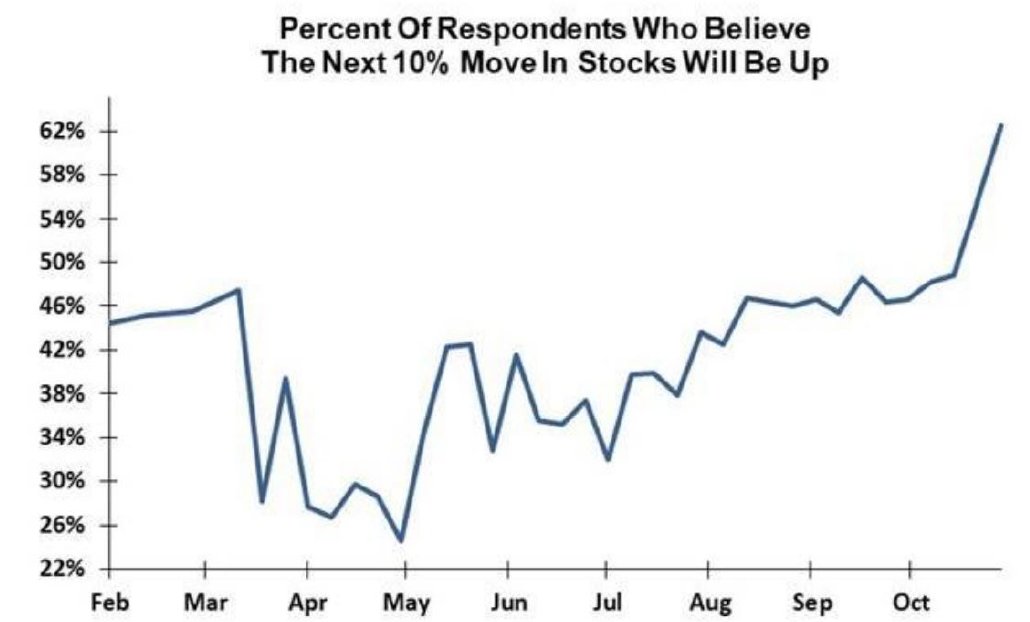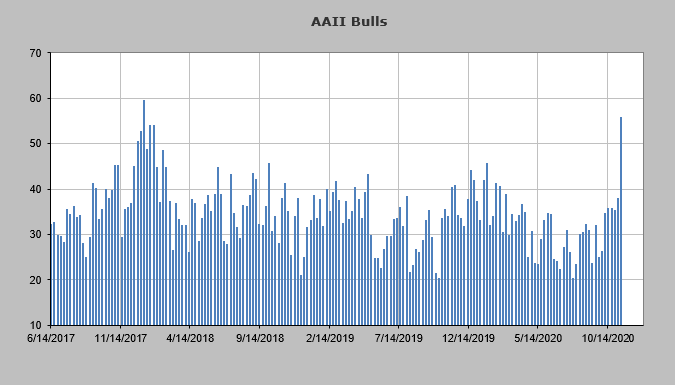Happy New Year! It’s 2021, which means it’s more shocking that you’re still physically writing checks than it is that you’re still writing 2020 on them.
Our outlook for 2021 is a positive one. The inertia created by fiscal and monetary authorities, combined with well-founded optimism and pent-up demand could create a very strong US economy (especially in the back half of 2021). In our opinion, it’s not a year to be cautious, it’s a year to think less and let the massive trends set in place over the last 9 months of 2020 show themselves through the corporate earnings and stock market performance of 2021.
We’re going to take a mulligan on the first week of 2021 and pretend that still belongs in 2020, but as always, there are always a few potential headwinds which could change our minds along the way.
- COVID – This one doesn’t need too much explaining, but I think everyone agrees that we’re not out the woods yet. There is enough uncertainty to go around with this one, but I will urge people that everything we KNOW, is already built into the market (potential uptick in cases, future potential lockdowns, etc.). The market rarely discounts the same risk twice, so it’s going to have to be something from left field to have an outsized impact in our opinion.
- Interest Rates – The Federal Reserve could not have been clearer during 2020. They will not raise interest rates until inflation starts to move. This is the playbook from the 1950s, and it’s much better for the Fed to be one step behind than one step ahead (their tools work better fighting inflation, not deflation). We believe the market is pricing in a Federal Reserve who will let the market run hot (whether they do or not will be another story), but a potential story shaping up for 2021 is whether or not the tantrums will begin if the Fed begins to signal that tapering/raising interests is getting closer in coming years.
- Inflation – If the Fed is successful and there is a sustainable increase in the price of commodities, the average consumer may start feeling a little pressure at the grocery store and the filling station. This may cause the consumer to pull the purse strings back a bit. The strength of the American spender has been the solid footing needed to jettison to all-time highs, so any change here could be noteworthy.
Now the fun stuff.
Themes We Like Going Into 2021
Disclaimer: It’s not lost on us that the allure of taking a shot on a few concentrated bets is enjoyable. In our minds, if this is what it takes to allow the majority of your assets to work their magic over time in low-cost index funds, that’s a small price to pay for “staying the course” with some added garlic. But my compliance department tells me that I can’t make a recommendation to purchase individual names without assessing the suitability of each person’s individual situation. Sounds logical to me and I would rather be safe than sorry.
So here are some themes that might be of interest (if you want to know the individual names, don’t hesitate to give us a call).
-
-
-
- Telemedicine/Healthcare Technology – We believe the proliferation of telemedicine is the next logical stopgap to try and halt the rising cost of healthcare. If Warren Buffett, Jamie Dimon, and Jeff Bezos’ joint venture to lower the cost of healthcare folded after three years, good luck to Congress. Lower co-pays, quicker access for non life threatening issues, and potential decrease of emergency room usage are all major societal benefits.
- Lasting effects of COVID – To go along with the first theme, we believe some of the digital transformation which has occurred over the previous year will be here to stay, long after the virus is contained (whenever that is). One of our themes from last year was eSignatures, which is a great example of this, but other parts of our COVID-infused life will remain. Think more about work from anywhere vs. work from home…
- State Tax Generators – The individual states have been in a fiscal mess for most of the last 20 years and with pension deficits continuing to climb across the country, there are only two ways to put more money in the state’s coffers. Decrease expenses (at a time where 10 million Americans are unemployed and countless others are struggling) or increase revenue. How does a state increase revenue? More taxes. Here’s where state sales tax revenue on cannabis and online gambling come in. This trend has already been very hot in 2020, and for us, we believe it is likely to continue in 2021.
- eSports – This one is going to be tough for the older crowd, but in 2020 more screen time from virtual learning became the gateway to video games rather than additional curiosity about their school subjects (who knew?). According to Twitch, the average user spends 95 minutes per day watching live gaming (yes, watching other people play video games). This is longer than the daily time spent on the typical social network. Instagram claims that its younger users average 32 minutes a day on its app, while the average mobile viewing session on YouTube is just over 40 minutes. As parents of younger children, we don’t see these numbers decreasing anytime soon.
- Frontier Tech – In a low growth (low interest rate?) environment, the growth that does exist, typically garners a much higher price than when the entire economy is growing robustly. As investors start to search for the next e-commerce or electric vehicle manufacturer, we believe there are pockets and individual names throughout the emerging world that offer a decent change to gain exit velocity and become sustainable and true market leaders in their respective countries.
-
-
As with all individual stocks, they are a gamble, but we’re still going to be watching how each sector performs to possibly become part of our overall client models moving forward.
Looking forward to a great 2021!
– Adam












